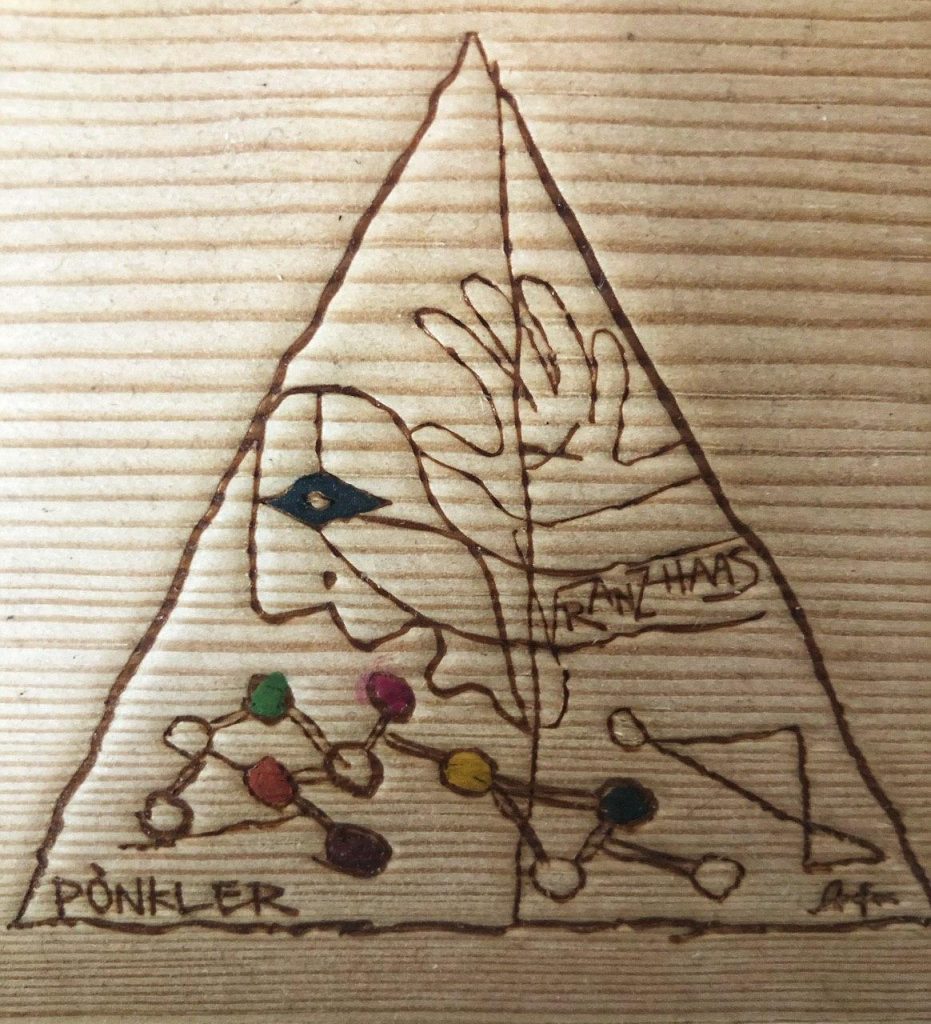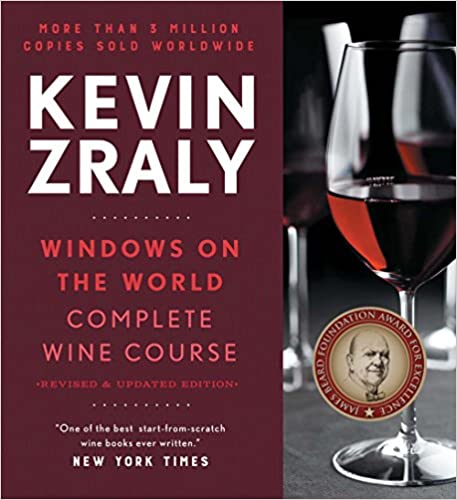Windows on the World Complete Wine Course
In the clear, engaging style that has made this comprehensive book a national and international favorite for more than three decades, Kevin Zraly&;America's ultimate wine educator and the creator of the Windows on the World Wine School&;demystifies every aspect of wine: from grape varieties and their flavors, different types and styles of wines, and how they&;re produced, to the latest winemaking developments, how to read a wine label, and the physiology of smell and taste. Covering the world of wine from the renowned reds of Bordeaux and California to the cutting-edge whites of Washington State and New Zealand, this essential volume features lush new photographs, a wealth of enlightening infographics, clear maps of each region, guided tastings, the best 500 wines in the world under $30, and hundreds of labels to help you identify wines worth tasting. Completing this must-have guide are notes on food pairings, frequently asked questions, a directory of resources, and a glossary of select terms. This newly revised and expanded 2017 edition introduces a fresh new interior design, the latest vintages to savor, and much more for beginners and experts alike. The Windows on the World Complete Wine Course will give you all the tools you need to discover and enjoy the perfect wines for you.
Altre informazioni →Le monde du vin aujourd’hui
La guerre du vin fait rage ! Ainsi titrait la célèbre revue américaine, Business Week, au début des années 2000 : "Wine War, How American and Australian wines are stomping the French". Jacky Rigaux poursuit sa croisade pour la défense des vins de terroir. Militant de la cause du "vin au naturel", il nous propose dans cet ouvrage une approche plus épistémologique et esthétique que partisane du monde du vin d'aujourd'hui, sans oublier de nous rappeler qu'il demeure avant tout une boisson créée pour notre plaisir d'être et de notre plaisir d'être ensemble.
Altre informazioni →Neuroenology. How the brain creates the taste of wine
In his new book, Gordon M. Shepherd expands on the startling discovery that the brain creates the taste of wine. This approach to understanding wine's sensory experience draws on findings in neuroscience, biomechanics, human physiology, and traditional enology. Shepherd shows, just as he did in Neurogastronomy: How the Brain Creates Flavor and Why It Matters, that creating the taste of wine engages more of the brain than does any other human behavior. He clearly illustrates the scientific underpinnings of this process, along the way enhancing our enjoyment of wine.
Neuroenology is the first book on wine tasting by a neuroscientist. It begins with the movements of wine through the mouth and then consults recent research to explain the function of retronasal smell and its extraordinary power in creating wine taste. Shepherd comprehensively explains how the specific sensory pathways in the cerebral cortex create the memory of wine and how language is used to identify and imprint wine characteristics. Intended for a broad audience of readers - from amateur wine drinkers to sommeliers, from casual foodies to seasoned chefs. Neuroenology shows how the emotion of pleasure is the final judge of the wine experience. It includes practical tips for a scientifically informed wine tasting and closes with a delightful account of Shepherd's experience tasting classic Bordeaux vintages with French winemaker Jean-Claude Berrouet of the Chateau Petrus and Dominus Estate.
Altre informazioni →The science of wine. From vine to glass
A thoroughly revised and updated Second Edition of this essential and groundbreaking reference gives a comprehensive overview of one of the most fascinating, important, and controversial trends in the world of wine: the scientific and technological innovations that are now influencing how grapes are grown and how wine is made. Jamie Goode, a widely respected authority on wine science, details the key scientific developments relating to viticulture and enology, explains the practical application of science to techniques that are used around the world, and explores how these issues are affecting the quality, flavor, and perception of wine. The only complete and accessibly written resource available on the subject, The Science of Wine: From Vine to Glass engagingly discusses a wide range of topics including terroir, biodynamics, the production of “natural” or manipulation-free wines, the potential effect of climate change on grape growing, the health benefits of wine, and much more. A must-have reference for a wide audience of students, winemakers, wine professionals, and general readers interested in the science of wine.
Altre informazioni →Understanding Vineyard Soils
The first edition of Understanding Vineyard Soils, published in 2009, has been praised for its comprehensive coverage of soil topics relevant to viticulture, and is a major resource for professionals in the industry. However, the subject is not static―new developments are occurring in the field all the time. For example, the 'organic movement' in viticulture continues to grow in importance and the emphasis on wine quality relevant to quantity is changing in an increasingly competitive world market. The promotion of organic and biodynamic practices has raised a general awareness about 'soil health' and methods to assess it, which is often associated primarily with the biological status of the soil.
Many commercial laboratories offer an extensive range of tests for soil (biological) health, the relevance of which is not clear to many growers.
However, the development of new tools for characterizing soil microorganisms and identifying the specific functions of taxonomic groups is an exciting area of research that may offer answers to some of these questions in the future. This second edition of White's influential book presents the latest updates and developments in vineyard and soil management practices. Just like the first edition, Understanding Vineyard Soils introduces readers from all backgrounds to the principles of viticulture.
Altre informazioni →Vini di confine
Una sorta di viaggio dantesco nel mondo della viticoltura. Così si potrebbero definire queste pagine nate dalla mente e dalla competenza del professor Attilio Scienza e dalla penna di Serena Imazio.
Anche qui troviamo maestro e discepolo, Ambrogio e Agostino, che assieme percorrono tutta la Lombardia alla scoperta dei vitigni e degli ottimi vini che si producono.
Altre informazioni →Storia di vini e di vigne intorno al Vesuvio. Il vino nella Campania antica dall’epoca pompeiana alla fine dell’Impero Romano
Il vino che oggi beviamo è frutto della grande cultura d epoca romana nella coltivazione della vite. Questo libro in maniera particolareggiata, ma al tempo stesso divulgativa, descrive la vita quotidiana in una "villa rustica" romana, i suoli più adatti ai diversi vitigni, i tempi per la vendemmia, il commercio del prezioso prodotto; ma anche il vino nella tradizione storica da Dionisio ai Bacchanalia. E non a caso i migliori vini dell'antichità decantati da Livio, Cicerone, Plinio, Marziale o Tibullo, erano il Falerno, il Greco, il Faustiniano, il Caleno.
Insomma i "vini degli imperatori" che trovavano proprio in Campania la loro area d'elezione, grazie alle caratteristiche del territorio e alle raffinate tecniche di coltivazione e vinificazione.
Altre informazioni →I giardini di Oltralpe
Easy. Nello slang postmoderno questo libro è easy. Facile da portare con sé, da consultare e anche da scarabocchiare. L'idea nasce da un ciclo di otto lezioni che l'autore ha tenuto presso l'Università Auptel di Ancona tra il 2014 e il 2015, per ragazzi desiderosi di misurare la propria esperienza enoica con calici di vino dei cugini d'Oltralpe. La bibliografia sull'argomento prevede solitamente tomi ingombranti, e di conseguenza costosi. Ecco. Questo libro vuole essere ciò che appare. Facile e democratico per poter parlare con competenza del successo di tutta, o quasi, l'enologia francese.
Altre informazioni →FLAWLESS. Understanding faults in wine
Flawless is the first book of its kind dedicated to exploring the main causes of faults in wine.
From cork taint, to volatile acidity, to off-putting aromas and flavors, all wine connoisseurs have encountered unappealing qualities in a disappointing bottle. But are all faults truly bad? Are some even desirable?
Jamie Goode brings his authoritative voice to the table once again to demystify the science behind what causes a good bottle to go bad. By exposing the root causes of faults in wine, Flawless challenges us to rethink our assumptions about how wine should taste and how we can understand beauty in a glass.
Italy’s Native Wine Grape Terroirs
Italy’s Native Wine Grape Terroirs is the definitive reference book on the myriad crus and the grand cru wine production areas of Italy’s native wine grapes. Ian D’Agata’s approach to discussing wine, both scientific and discursive, provides an easy-to-read, enjoyable guide to Italy’s best terroirs. Descriptions are enriched with geologic data, biotype and clonal information, producer anecdotes and interviews, and facts and figures compiled over fifteen years of research devoted to wine terroirs. In-depth analysis is provided for the terroirs that produce both the well-known wines (Barolo, Chianti Classico, Brunello di Montalcino) and those not as well-known (Grignolino d’Asti, Friuli Colli Orientali Picolit, Ischia). Everyday wine lovers, beginners, and professionals alike will find this new book to be the perfect complement to D’Agata’s previous award-winning Native Wine Grapes of Italy.
Altre informazioni →Per Un Sublessico Vitivinicolo: La Storia Materiale E Linguistica Di Alcuni Nomi Di Viti E Vini
The study examines the evolution and linguistic history of some 165 Italian terms for different vines and wines. Proceeding on the assumption that the culture-historical significance of wines and vines is only poorly reflected both in the vocabulary of standard Italian and of many Italian dialects, the author draws on a broad variety of sources to substantiate the existence of these proper names as far back as the 12th century and proceeds contextually in proposing etymologies hitherto either unknown or considered uncertain. The description of the historical development of these terms demonstrates that a number of proper names is still restricted to specific idioms and that it is both necessary and desirable for this sub-lexicon to be integrated more firmly if this legacy is not to be lost for good in the medium term. The corpus the study is based on is also designed as an encouragement and potential basis for a comprehensive description of wine and vine names in Italian.
Altre informazioni →Il maestro di vino
La figura del Maestro di vino, eredità dell'epoca rinascimentale italica, rappresenta oggi una professionalità tecnico-pratica sospesa tra arte e scienza, tra competenza e piacere edonistico, tra esperienza sensoriale e capacità comunicativa, tra passione e curiosità. Il ruolo del Maestro di vino va oltre quello tradizionale del sommelier. Egli, infatti, vuole essere un servitore a tutto campo, uno specialista, un insegnante, un comunicatore e, necessariamente, un attualizzatore. Un maestro è, a suo modo, il frutto del fascino, del mistero e del simbolismo che il vino ha da sempre avuto nella storia dell'uomo. La cultura del Maestro di vino parte dal bicchiere e si estende a ritroso fino al terroir, oppure ricompone l'intero processo muovendo dalla terra d'origine per tornare al bicchiere, dalla vite al consumatore, cogliendone sfumature, specificità ed evocazioni sensoriali. Attraverso uno sguardo attento alle zone e agli stili produttivi del mondo, i contributi compresi nel volume trattano aspetti connessi alla produzione (la vinificazione, la fermentazione), alla distribuzione (i mercati, il valore del brand, le normative) e al consumo (la degustazione, i criteri di scelta, i significati sociali) del vino nelle sue varie espressioni. Integrando prospettive tra loro differenti, i saggi qui contenuti tentano di tracciare una strada nella grande tradizione enogastronomica italiana (e non solo) e di delineare il profilo professionale e culturale del Maestro di vino.
Altre informazioni →
